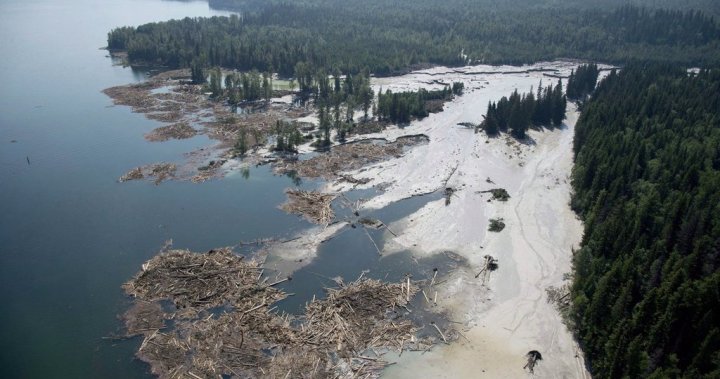In a landmark ruling that reverberates through both the mining industry and Indigenous communities, a British Columbia court has imposed significant restrictions on the Mount Polley mine’s tailings discharge amid an ongoing legal challenge by affected First Nations groups. The decision marks a pivotal moment in one of Canada’s most contentious environmental disputes, now entering its tenth year since the catastrophic 2014 tailings dam collapse.
The Secwépemc Nation, whose territories have borne the environmental burden of what is considered one of Canada’s worst mining disasters, secured a crucial victory as Justice Christopher Giaschi ordered Imperial Metals to limit discharge operations while the broader case proceeds through CO24 Canada News coverage.
“This isn’t merely about environmental regulations—it’s about our sacred obligation to protect the waters that have sustained our people since time immemorial,” said Kukpi7 (Chief) Judy Wilson of the Union of BC Indian Chiefs, who has been at the forefront of the legal battle. “The court has recognized that our concerns deserve serious consideration.”
The 2014 disaster released over 24 million cubic meters of mining waste into Quesnel Lake and surrounding waterways, devastating local ecosystems and traditional food sources. Despite extensive remediation efforts, independent researchers continue to document elevated levels of copper, selenium and other contaminants in watershed systems that once provided pristine habitat for sockeye salmon runs.
Imperial Metals, which has maintained that its current operations meet all provincial requirements, faces increasing scrutiny over its environmental compliance record. Company spokesperson Rachel Davidson stated that “while respecting the court’s decision, we remain confident that our discharge practices adhere to the strictest environmental standards,” though CO24 Business analysis indicates the ruling could significantly impact the company’s production capacity and financial outlook.
The broader implications extend beyond this single mine. As CO24 Politics reporting has highlighted, the case represents a growing trend of Indigenous communities successfully leveraging both treaty rights and inherent title claims to challenge resource extraction projects that threaten traditional territories.
Dr. Maya Henderson, environmental law specialist at the University of British Columbia, noted the significance of the decision: “The court is essentially acknowledging that the economic interests of mining operations cannot automatically supersede Indigenous rights and environmental protection. This creates an important precedent for similar disputes across Canada.”
The provincial government, which has faced criticism for its oversight of the mining sector, must now navigate competing pressures from industry advocates warning about investment uncertainty and Indigenous communities demanding stricter enforcement of environmental protections throughout British Columbia’s resource sector.
For residents of nearby communities like Likely, BC, who have witnessed firsthand the aftermath of the 2014 disaster, the court’s intervention offers a measure of validation. “We’ve been living with the consequences for a decade now,” said longtime resident Thomas Barker. “The lake has never been the same, and it’s about time there were real consequences for what happened here.”
As this case advances through higher courts in the coming months, the fundamental question remains: in a nation built upon resource extraction yet increasingly conscious of both environmental limits and Indigenous rights, how will Canada reconcile these competing visions for the stewardship of its lands and waters?










